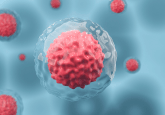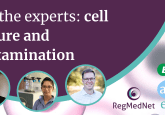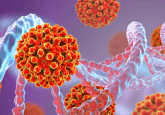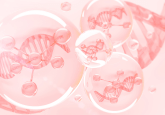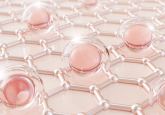MSC-derived extracellular vesicles: ask the experts
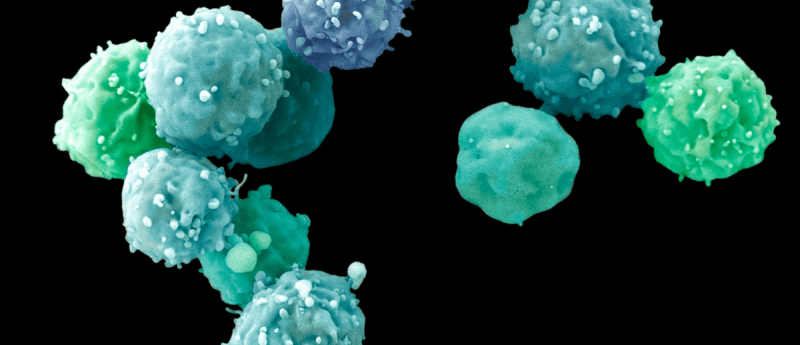
In this ‘Ask the experts’ feature, we have brought together a panel of experts from across the industry to share their current perspectives on mesenchymal stem cell (MSC)-derived extracellular vesicles (EVs). For example, what are the main benefits of using MSC-derived EVs? How can the industry improve quality control and consistency in MSC-derived EV-based clinical applications? How can the industry employ best practices in culturing and scaling up EVs? Discover more on the topic with our panel of thought leaders, featuring Amy Kauffman (Corning Life Sciences; MA, USA), Ross Macdonald (Cynata Therapeutics; Victoria, Australia), Christof Westenfelder (The University of Utah; USA) and Jon Rowley (RoosterBio; MD, USA).
-
- Meet the Experts
- What are the main benefits of using mesenchymal stem cell (MSC)-derived extracellular vesicles (EVs)?
- What are the greatest limitations of using MSC-derived EVs in therapeutic applications?
- How can the industry improve quality control and consistency of MSC-derived EV-based clinical applications?
- How has the shift from autologous to allogeneic MSCs changed the future of cell therapy?
- How can the industry employ best practices in culturing and scaling up EVs?
- How could automation optimize MSC-derived EVs?
- What are your recommendations for MSC-derived EVs in the future of research and practice?
Meet the Experts

Amy Kauffman
Senior Development Engineer
Corning Life Sciences
Amy Kauffman is a Senior Development Engineer at Corning Life Sciences (MA, USA). Prior to joining Corning, Amy received her PhD in Biomedical Engineering from the University of Texas Southwestern Medical Center (USA) with a specialty in biomaterials, tissue engineering and nanotechnology, where she pioneered advanced coatings for bioresorbable stents for pediatric pulmonary and cardiac interventions. She also completed a Postdoctoral Fellowship at Yale University (CT, USA) specializing in non-viral gene delivery and synthetic nanotechnology for treatment of diabetic wounds, blood disorders and other rare diseases. At Corning, Amy is responsible for new product development for advanced cell culture, cellular and acellular therapies, as well as bioprocess applications.
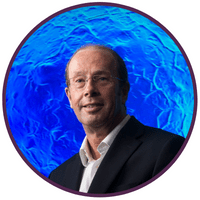
Ross Macdonald
CEO
Cynata Therapeutics Ltd
Ross Macdonald is the CEO of Cynata Therapeutics (Victoria, Australia), a clinical-stage stem cell and regenerative medicine company developing a therapeutic mesenchymal stem cell platform technology, Cymerus™. He has over 30 years of experience and a track record of success in pharmaceutical and biotechnology businesses. His career history includes positions as Vice President of Business Development for Sinclair Pharmaceuticals (now Sinclair IS Pharma; London) and Vice President, Corporate Development for Stiefel Laboratories (Maidenhead, UK), CEO of Living Cell Technologies Ltd (Auckland, New Zealand), Vice President of Business Development of Connetics Corporation (GA, USA) and Vice President of Research and Development of F H Faulding & Co Ltd (Adelaide, Australia).
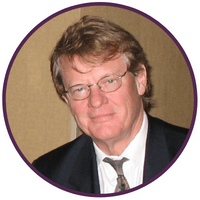
Christof Westenfelder
Emeritus Professor of Medicine and Physiology
University of Utah
Christof Westenfelder is emeritus Professor of Medicine and Physiology at the University of Utah (USA) and former Chief, Section of Nephrology and Hypertension at George E Wahlen Veterans Affairs Healthcare System (UT, USA). His group conducted a successful clinical trial in which subjects undergoing cardiac surgery that were at high post-operative risk for acute kidney injury were treated with allogeneic mesenchymal stem cells (MSCs). Christof is also the founder and CEO of SymbioCellTech (UT, USA), a regenerative medicine company that is currently preparing to conduct a stem-cell-enabled clinical trial with engineered “Neo-Islets”, 3-D organoids of pancreatic islets and MSCs. SymbioCellTech has developed a hollow-fiber bioreactor-based technology to simultaneously produce both MSCs and their exosomes, and also Neo-Islets. Together, this hollow-fiber bioreactor (Quantum™) technology facilitates the efficient and cost-saving scale-up of the above cell-based and extracellular vesicle-based therapies.

Jon Rowley
Founder and Chief Product Officer
RoosterBio
Jon Rowley is the founder and Chief Product Officer at RoosterBio (MD, USA). He received a PhD in Biomedical Engineering from the University of Michigan (USA) and has a passion for the industrialization and commercialization of products manufactured from living cells, with extracellular vesicles (EVs) and exosomes being an interesting new aspect of this part of the industry. RoosterBio is a mesenchymal stem cell (MSC) and EV manufacturing technology platform company that provides GMP cellular raw materials and highly engineered bioprocess medium, along with bioprocess recommendations, to rapidly develop and translate MSC or MSC-EV therapeutic products. RoosterBio also provides services wrapped around their products that accelerate their customers’ path to GMP manufacturing and the clinic.
What are the main benefits of using mesenchymal stem cell (MSC)-derived extracellular vesicles (EVs)?
Amy Kauffman (AK): MSC-derived EVs contain the same essential biomolecules and paracrine factors as the parent MSC cell, which is found to be the source of therapeutic benefits. They are also completely designed by nature which includes a lipid bilayer membrane that provides stealth to evade the immune system and allows for EVs to cross biological barriers (such as the blood brain barrier) with ease. Lastly, being an acellular product, they cannot replicate, preventing spontaneous tumor formation, nor can they be prone to viral pathogen hitch-hiking that can occur with whole cell transplantation.
Ross Macdonald (RM): Transportation and storage of EVs may be easier than for living cell products, potentially reducing cost-per-treatment.
Christof Westenfelder (CW): The benefit of using MSC-derived exosomes lies in the fact that therapeutic responses can be obtained with a cell-free biotherapy. In addition, the small size of exosomes facilitates their delivery into the microcirculation that is consistently compromised by both acute and chronic vascular disorders. The administration of the relatively large MSCs into such compromised microcirculations may actually result in the formation of harmful microinfarcts.
Another very useful tool is the fact that MSC-derived exosomes can be programmed to deliver a cargo that exerts therapy-specific functions such as anti-apoptotic, angiogenic, anti-inflammatory, immune-modulating, etc. The functional programming of MSC-derived exosomes can be carried out by changing the culture conditions of MSCs so that the cargo of released exosomes functions in injured target tissue as therapeutically desired.
Jon Rowley (JR): The advantage of MSC-EVs is that they already have many of the inherent therapeutic properties which make the parent MSCs such a strong cell therapy candidate. MSCs are possibly the most communicative population of cells in the body, and much of the communication with other cells are via EVs and exosomes – it is quite fascinating, really. Therefore, MSC-EVs will not only already contain relevant therapeutic contents, but also, they will be more readily delivered to the cells in the body that need them. To date, the great majority of clinical studies investigating EVs as therapeutics are utilizing MSC-EVs, which lends support to this theory.
One key benefit in using MSCs as a cell source, compared to other primary cells such induced pluripotent stem cells, hematopoietic stem cells, or T-cells; for making therapeutic EVs is that the GMP manufacturing and supply chain for the base MSCs are well established, readily available, and developed for rapid implementation in GMP manufacturing at a variety of scales. This has led to very rapid movement of MSC-EVs through product development and into clinical testing.
What are the greatest limitations of using MSC-derived EVs in therapeutic applications?
AK: As the field is still cutting edge, there are limitations on the generation of the EV therapeutics and the regulatory boundaries of getting into the clinic. From my understanding, the greatest challenge on the generation side is large-scale manufacturing of high quantity and quality EVs from MSCs. Much of the pre-clinical research is working on bench scale equipment which can have difficulties in scale-up translation to clinical manufacturing. On the regulatory side, biologics are seeing high barriers to overcome for approval with standard criterion to meet that has not yet been established. However, the disruptive technology of mRNA containing lipid nanoparticles for COVID-19 vaccines is pushing the boundaries, sparking the conversations and opening the doors for a new age of biologic therapeutics.
RM: EVs are derived from cultured cells, and it is frequently accepted that the EV has advantages over the cells from which they are isolated. However, it must be noted that cellular products – being living drugs – are able to respond to and interact with their environment, making them superior to EVs. This particularly applies to MSCs: EVs that are derived from MSCs do not have any capacity to respond accordingly to inflammatory signals for example, although it might be possible to engineer EVs in such a way that they can be targeted.
CW: MSC-derived EVs, including their exosomes, are a non-homogeneous mixture of microparticles that carry and can deliver various cargos. Scale-up of MSC-derived exosome production and their standardizable classification based on cargo content (i.e. their functional characteristics) must be fully developed. These technologies are currently under development.
JR: We are so very early in the field that there are limited characterization techniques available for EVs, and when you cannot characterize something, it is difficult to optimize the manufacturing. We mostly have to treat EVs as populations, and they have such diverse cargo that they are not uniform and will have a complicated mechanism of action. Due to this, there is a general challenge of connecting therapeutic potency to a specific molecular/cargo signature in EV populations. This may lead to regulatory challenges as the characterization technology is getting developed. Newly developed characterization technologies must be run closely along with the preclinical/clinical study. This is why it is important to have scaled manufacturing processes in place to generate material for the studies that show efficacy, where new characterization technologies, once they are available, can be “plugged in” to better understand the potent therapeutic product.
There are also many manufacturing and purification challenges, with many bench-scale research methods working their way into initial clinical studies. As therapeutic developers become invested in products made from these methods, they are hesitant to change to more scalable bioprocess purification methods, especially since there are not well-established characterization methods making comparability analysis ambiguous. Thus, it is common to get in the unscalable production trap.
How can the industry improve quality control and consistency of MSC-derived EV-based clinical applications?
AK: Standardization! The heterogeneity not only of the EVs themselves, but the technologies and processes being used for production, downstream processing and characterization is high. There is published guidance (Minimal information for studies of EVs 2018) for minimal criteria to consider for EV research. However, in industry there are no such guidelines or established criteria. Moving toward standardization of equipment, protocols and required characterization will improve quality control and consistency of MSC-based and EV-based clinical applications.
CW: Both industry and academic institutions have established MSC-based therapies that utilize bone marrow, adipose, umbilical cord or organ-specific MSCs or their exosomes. For example, RoosterBio is a company that has succeeded in the establishment of FDA-approved, quality control and consistency guarantees. Other companies are developing comparable approaches. Once the general availability of FDA–approved clinical-grade MSCs and their exosomes is accomplished, these biotherapies will become widely accepted and used.
JR: Since EV composition is a function of the state of the parental MSC cell at the time of production, using a consistent cell source, with a consistent and reproducible EV production process, coupled with standardized methods of purification are all key to making consistent EVs. All these concepts are outlined in the Minimal information for studies of EVs guidelines and are really best practices for product development and manufacturing.
How has the shift from autologous to allogeneic MSCs changed the future of cell therapy?
AK: The shift to allogeneic MSCs can result in better therapeutic outcome for MSC-therapies than autologous. In general, extracting MSCs from an ill patient can have unsuccessful outcomes given disease has likely already spread systemically when they are symptomatic, and the health of the harvested MSCs is likely questionable. Being able to transplant MSCs from a healthy donor match can lead to more successful outcomes given the health status of the donor and the likely improved quality of the stem cells. Clearly, there are other potential side effects of transplantation of ‘not-self’ material that may argue autologous MSCs are a better choice. However, opening the donor population pool has shown a higher overall survival success rate in allogeneic stem cell therapies compared to autologous. Furthermore, being able to use healthy donor cells also opens the opportunity for genetic editing or bioengineering interventions that may not be possible with autologous stem cells due to health status and limited treatment time turnaround.
RM: The manufacturing approach taken by Cynata with the company’s proprietary Cymerus technology ensures a consistent, potent product. Autologous cell therapy products, by their very nature, are not consistent and thus the therapeutic outcome is unpredictable from patient to patient. There is also the risk that cells derived from an unwell donor (i.e. patient) may be compromised by the patient’s condition. This inconsistency deviates from a cardinal requirement of therapeutic product development and that is to ensure batch-to-batch consistency. Even allogeneic MSCs derived from different donors have this limitation, a fact that has recently been the subject of FDA commentary in relation to a biologics license application for an allogeneic MSC product. Moreover, autologous cell therapy products take time to manufacture/prepare for administration to the patient. Such time could be very critical in acute settings.
CW: Since MSCs are significantly immune privileged, by not expressing HLA-II and co-stimulatory proteins, by their ability to up–regulate regulatory T-cells, by blocking dendritic and natural killer cell activation and by inhibiting T-cell proliferation and antibody production, the use of autologous MSCs has become unnecessary. It is therefore logical that virtually all previous and ongoing clinical trials with MSCs utilize allogeneic MSCs.
How can the industry employ best practices in culturing and scaling up EVs?
AK: The field of EVs is very challenging as there are many different techniques, tools and limited defined standards of good practice. To keep it simple, for therapeutic EV manufacturing, you need three things: growth area, defined media and healthy MSCs. For growth area, know your target number of EVs and plan to achieve the desired number of MSCs in a manageable footprint to get you there. Regarding defined media, be cognizant of the components that comprise your media and make sure it is suitable for your MSCs and there will be no interference with your final EV product since many components can contain EVs derived from other sources (especially animal serums). Lastly, healthy cells produce high quality therapeutic EVs. Therefore, you must know your cells, their sensitivities, media preference, and environmental factors that could subsequently impact your EV production.
JR: The industry has been leveraging the stirred tank bioreactor production of MSCs at scale to establish bioreactor processes for MSC-EVs. This includes technical approaches including fed-batch medium to minimize media costs, as well as approaching MSCs as producer cells, similar to CHO or HEK. Finally, leveraging much of the scalable purification technology from the viral field, including tangential flow filtration and chromatography, is helping to establish scalable GMP production that can be rapidly plugged into today’s CDMO framework and existing clean rooms.
How could automation optimize MSC-derived EVs?
AK: Batch to batch variation in EV quantity and quality is a significant problem the field is facing when producing EVs on a pre-clinical scale. As technology for EV production is still evolving, there are not standardized system available at this time specific to EV manufacturing. At Corning, we have a couple of options available to help automate your EV workflow. First is the HYPERStack system can be manifolded together for large-scale production and paired with the automated manipulator to perform seeding and harvesting – we are in the process of developing the protocol for mechanical movement for a potential of 1014 (one hundred trillion) EVs per 3-day culture. Second is the Ascent Fixed Bed Bioreactor (FBR) system that also supports adherent bioproduction (including EVs) with the scale and automation of a suspension manufacturing system. More information about these Corning options can be found by visiting www.corning.com/celltherapy.
CW: With the development of novel exosome isolation techniques and their incorporation in hollow fiber cell expansion systems, automation of EV production will occur. This work is currently ongoing in at least two companies and in nanocenters of various universities.
What are your recommendations for MSC-derived EVs in the future of research and practice?
AK: This is an exciting time for EVs as the number of clinical trials and fundamental publications is still exponentially increasing for MSC-derive EV therapeutics. We have witnessed how vaccinology has evolved tremendously in a very short period of time, from live or neutralized virus/viral particles to synthetic lipid nanoparticles loaded with mRNA for COVID-19 pandemic protection. As COVID-19 is also a driving factor for rapid innovative EV therapies, a revolution in therapeutics is on the horizon particularly for regenerative medicine and clinical oncology. We are already seeing FDA approval for some cancer diagnostic tests and I do not think we will be waiting long for new vaccine candidates, regenerative medicine treatments and gene editing tools that centralize about MSC-derived EVs.
RM: I believe the preferred therapeutic modality will be MSCs themselves rather than EVs derived from them.
CW: The technique of programming EVs by changing culture conditions of MSCs, which is particularly easy to accomplish in hollow fiber cell expansion systems such as the QuantumTM and others, will provide powerful therapeutic tools for both research and practice. Once standardized, this EV-based therapy together with MSC-based interventions, will provide practitioners with highly efficient tools in the rapidly growing field of regenerative medicine.
JR: Our recommendations are always to start by establishing the baseline safety and potency parameters needed for a specific indication and establish a path towards a GMP chain early as you perform product development to avoid a bottleneck when you are ready to enter the clinic. The supply chain always starts with cell sourcing, good tissue practices and proper cell banking, as well as a highly productive cell culture medium with an appropriate regulatory profile. Ideally both the cell and media materials will have master files on file at the FDA for easy referencing. Once these are established it is possible to take a requirements-based approach towards manufacturing for a consistent product. Lastly, always think about how the manufacturing process decisions being made today will impact your future decisions and try not to get locked into unscalable technology on an unscalable supply chain.
Disclaimers
The opinions expressed in this interview are those of the interviewees and do not necessarily reflect the views of RegMedNet or Future Science Group.
This feature was produced in association with Corning Life Sciences.
